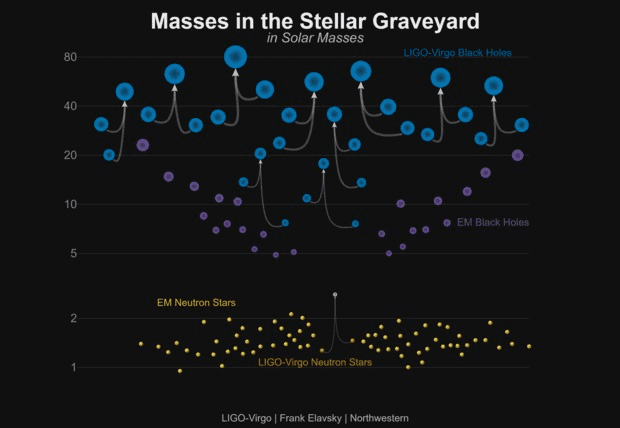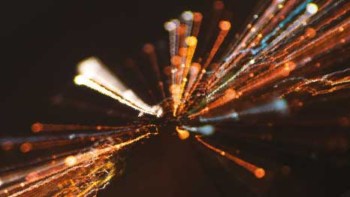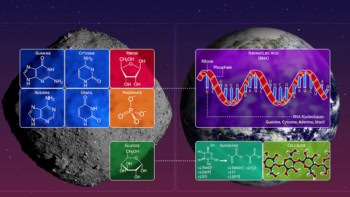With the Physics World 2019 Breakthrough of the Year due to be announced on 12 December, Physics World journalists look back at the past decade of winners and explore how research in that field has moved on. Here Sarah Tesh looks at the closely linked 2016 and 2017 breakthroughs in gravitational-wave detection and multimessenger astronomy.

One of the biggest scientific discoveries of the past decade – possibly even the last century – was the first ever direct observation of gravitational waves by the LIGO Scientific Collaboration, winners of the Physics World 2016 Breakthrough of the Year.
On 15 September 2015, ripples in space-time produced by two merging black holes were detected by LIGO’s newly upgraded twin interferometers in Livingston, Louisiana, and Hanford, Washington, US. “I’d been working on LIGO for a little over 16 years at that point,” explains Amber Stuver of Villanova University in the US, “and to have a detection roll in on the first day of observation with Advanced LIGO was beyond shocking. I’d been expecting a detection within the first year, not on the first day!” The resulting chirp-and-ringdown waveform LIGO presented to the public in February 2016 provided evidence for one of the last unverified predictions of Einstein’s theory of relativity. And it wasn’t a one-off – just four months later, in June 2016, the collaboration announced they’d observed a second binary black hole coalescence on Boxing Day 2015.
Naturally, for such ground-breaking discoveries, the LIGO collaboration was awarded our Breakthrough of the Year prize for 2016. But those historical observations were just the beginning for LIGO. As my colleague Tushna Commissariat said in the award announcement, the measurements heralded the start of the era of gravitational-wave and multimessenger astronomy.
On 4 January 2017, LIGO made their third observation of a black-hole merger, and on 14 August 2017 they made their first joint detection of gravitational waves with the Virgo Collaboration in Italy. Rainer Weiss, Barry Barish and Kip Thorne also won that year’s Nobel Prize for Physics for decisive contributions to the LIGO detector and the observation of gravitational waves.
Multimessenger breakthrough
But it was the announcement on 16 October 2017 that took over the science headlines once again. Not only had LIGO and Virgo detected gravitational waves from a neutron-star merger for the first time on 17 August, but the Fermi Gamma-ray Space Telescope picked up gamma-rays from the same event. The observations prompted astronomers to look at the signals’ origin using dozens of telescopes and detectors around the world and in space, and the aftermath of the merger was captured across the electromagnetic spectrum. “We were able to provide observational evidence that the long-hypothesized neutron-star merger is indeed a source for short gamma-ray bursts,” says Stuver. “Then we got to sit back and watch the light show as traditional electromagnetic astronomers revealed the evolution of the resulting kilonova.”
The coordinated observations provided huge amounts of information about what happens when neutron stars merge, clues about how heavy elements are produced in the universe, and a new way of measuring the expansion rate of the universe. It was a huge milestone for multimessenger astronomy and epitomized the collaborative nature of science, winning the international team of thousands of researchers our 2017 Breakthrough of Year.

Since that very first observation of gravitational waves in September 2015, LIGO and Virgo have made a total of 11 confirmed detections and they’ve given us many new insights into our universe, but there’s still a lot gravitational waves could reveal. The researchers hope that, among other things, more observations will reveal the elusive intermediate-mass black holes (100–10,000 solar masses) and provide clues about the mass gap between the heaviest neutron stars and the lightest black holes. “There is a lot of interest on why we haven’t seen any compact objects above three solar masses but less than five solar masses,” explains Stuver. “This has implications for our understanding of how the most massive stars die.” More observations of gravitational waves from black-hole mergers also means scientists can begin to identify patterns in their properties that can reveal how the binary system came to be in the first place.
Burst gravitational waves
There are also sources of gravitational waves that are yet to be seen. So far, all confirmed detections have originated from compact binary coalescence. Stuver expects that the next thing to be found will be burst gravitational waves that come from sources that are either unexpected or we don’t understand well enough to accurately model. “Looking for burst gravitational waves is looking for the unexpected,” she says, “and these kinds of discoveries have an enormous potential to reveal concepts that will revolutionize our understanding of the universe.”
In order to reach these goals, the LIGO and Virgo detectors undergo regular upgrades between observing runs. “One of my personal favourites,” explains Stuver, “has been the development of injecting squeezed light states into the detectors to decrease the shot (quantum) noise and increase the sensitivity of LIGO.” There are also new detectors on the horizon. KAGRA, an interferometer built inside of the Kamioka Observatory in Japan, is set to join LIGO and Virgo by the end of the current observing run, and by around 2025 the LIGO-India observatory should also be operational. “Having more detectors will allow us to better localize the source location on the sky and resolve gravitational wave polarization information,” Stuver says. Then there’s LISA – ESA and NASA’s space-based gravitational-wave observatory, which will build on the success of LISA pathfinder and LIGO. LISA will look for gravitational waves with much longer wavelengths than the Earth-based observatories, opening up the range of possible sources.
There’s no denying that its been a very successful few years for the field of gravitational-wave observation, and multimessenger astronomy – and there’s bound to be a lot more. “I am so awed that I have been privileged to be a part of this amazing collaboration of scientists from around the world,” Stuver concludes, “and can’t wait for what we will discover in the future.



